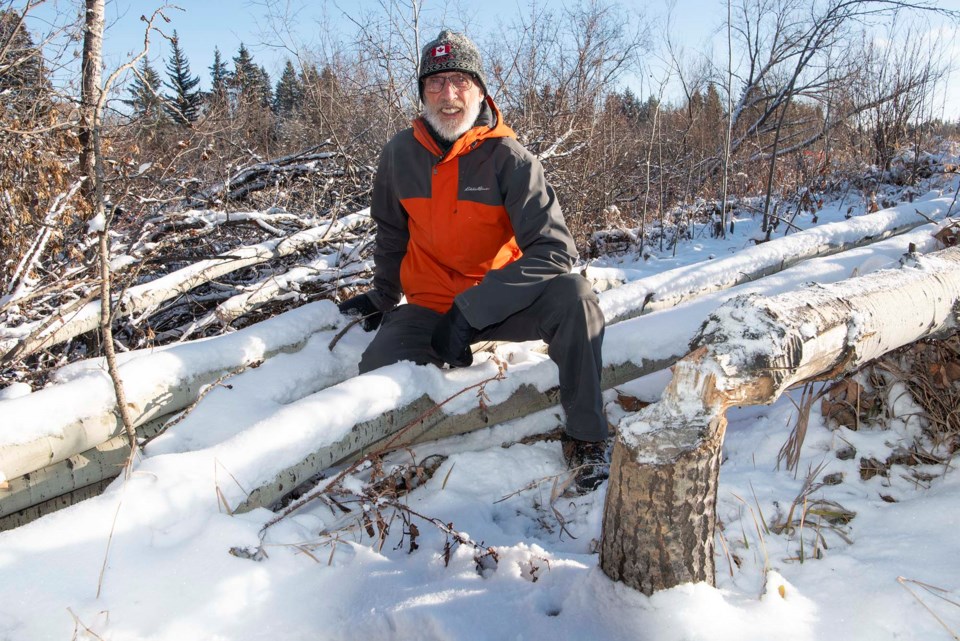A longtime St. Albert resident says a summer of fallen trees shows the city needs to rethink its beaver policies.
Basil Delaney, a 45-year resident of St. Albert and one of the namesakes of Delaney Pl., spoke to the Gazette last week about beaver-related tree damage in the Sturgeon River valley.
Delaney said beavers felled a large number of trees along the Sturgeon River this year, particularly near the Boudreau Road and St. Albert Trail bridges. He fears this level of beaver activity is not sustainable and will outstrip the city’s tree-planting efforts.
“In 10 years there’s going to be no tree cover along the [Red Willow] Trail,” he said.
Delaney said he has repeatedly raised this issue with city pest control officers this year. Officers have wrapped some trees in wire as deterrents, but have not stopped the beavers from chewing down other trees.
While not calling for their extermination, Delaney said the city should take a harder line on beaver activity to protect the city’s trees and its goal of growing the tree canopy.
“We need to have a good look at how the system is working.”
Beavers just beavering?
The beaver (Castor canadensis) is the largest rodent in North America and second largest in the world, reports Hinterland Who’s Who. (The biggest is the capybara.) A typical beaver will cut down 216 trees a year for food and building material. Their activities are known to stabilize stream flows, reduce erosion, and create habitat for many other animals. They can be found throughout the Sturgeon River valley.
In 2006, the City of St. Albert drew criticism after an employee used a bow and arrow to kill a problem-causing beaver. The city created a beaver management policy later that year in response; the policy is now part of the city’s Integrated Pest Management Plan.
Under the policy, city crews generally leave beavers alone unless they damage city infrastructure, such as by blocking a culvert or cutting down a large city-planted tree. Crews will attempt to deter problem beavers through non-lethal means such as wire skirts and dismantling dams before attempting to move or kill them; they will skip straight to relocation/destruction if a beaver is in certain artificial water bodies such as Grandin Pond.
City parks operations supervisor Erin Pickard said the city is monitoring several beaver dams and lodges in St. Albert, particularly a large one in Braeside. It is also testing new beaver management devices such as pond-levellers around Carrot Creek.
Pickard said the city was not yet concerned about beavers affecting tree cover in St. Albert. Almost all of the beaver damage done this year was to natural tree stands, and would likely cause new trees to sprout as replacements. Humans removing trees from yards had a far greater impact on the city’s tree canopy than beavers.
“The beavers do need to eat,” Pickard said, and the city accepts that it will lose some trees to beavers.
Pickard said destroying or relocating beavers is generally ineffective, as if you remove one, another will simply move in to replace it.
“If we have good habitat, you’re going to get beaver populations that move in, no matter what.”
Pickard said the city’s beaver policy aims to strike a balance between protecting city infrastructure and living with beavers.
“Having beavers in the [Sturgeon River] is important to us too,” she noted, as the dams they build create vital habitat during droughts, such as the ones the city has had in recent years.
Residents with beaver concerns should call Public Works at 780-459-1557.




